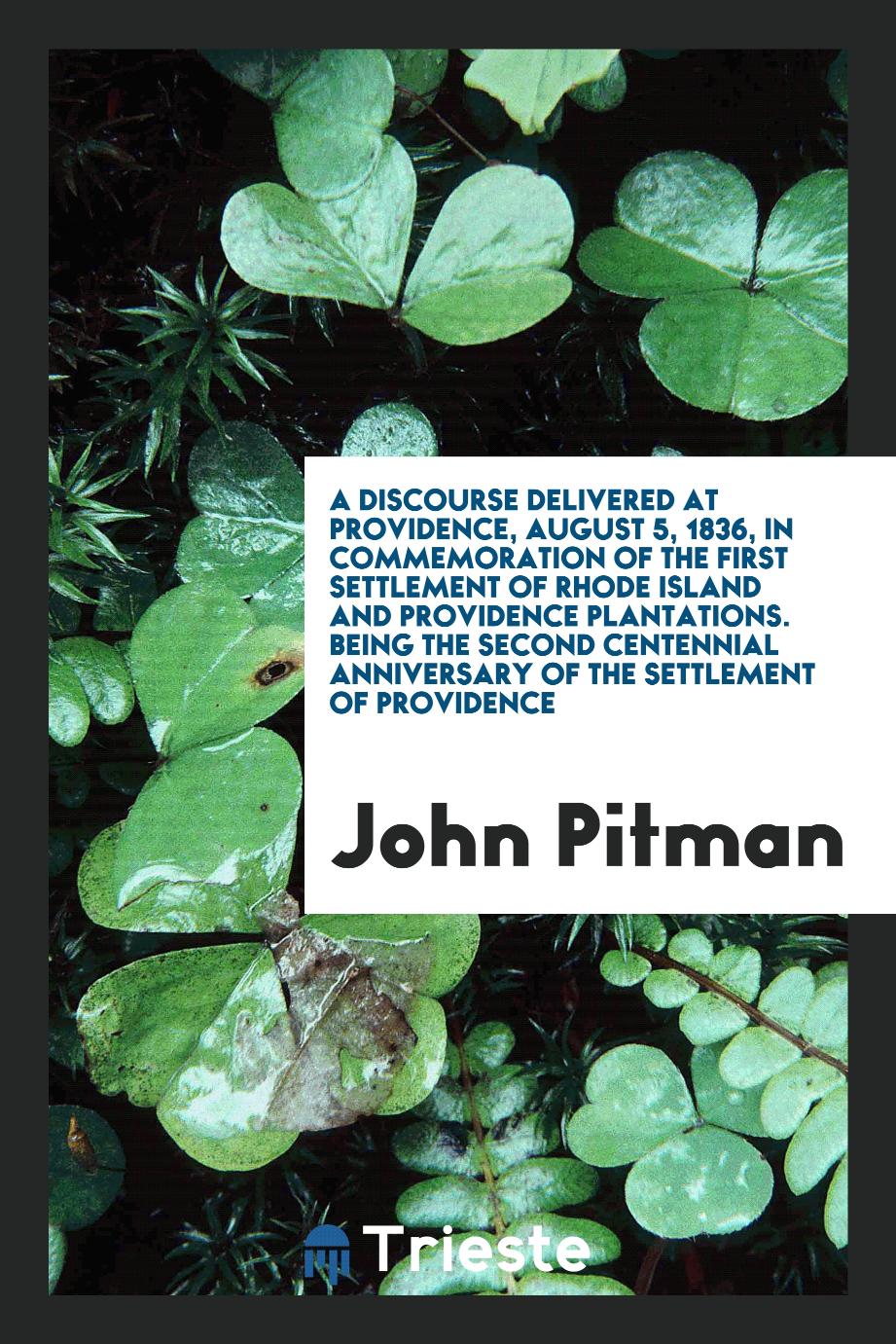
John Pitman
The Reverend John Pitman (1751-1822) was born in Boston, the son of John and Mary (Blower) Pitman. In his youth he was apprenticed to a ropemaker, a profession he was to practice later in his life along with that of ministry in the Baptist church. The Biographic Cyclopedia of Rhode Island states, "He seems to have lived a thoughtless life for several years, but in 1771 he passed through a radical change, becoming a hopeful Christian." Pitman moved to Philadelphia in 1774 for economic reasons, and in 1776 joined a volunteer military company which formed part of the First Battalion of Pennsylvania Militia under Colonel Dickinson. Pitman may have begun preaching as early as 1777. He was a traveling minister until 1784, moving through New York, New Jersey, Maryland, Pennsylvania, Connecticut, Massachusetts, and perhaps other nearby states. In the spring of 1784 he settled in Providence at the suggestion of his brother and the Reverend James Manning, founder of Brown University. He became a member of the First Baptist Church, and began preaching regularly at Pawtuxet. He became the pastor of the Baptist church in Warren in 1784 and remained there until July, 1790, when returned to Providence; however, he continued to preach at Warren for several months. From March of 1791 until approximately 1797, Pitman was the pastor of the Baptist church at Pawtuxet. In 1798, Pitman succeeded the Reverend John P. Jones as minister of the First Baptist Church of Seekonk (which for several years Pitman designates as Rehoboth), which had been organized in 1794. Leonard Bliss Jr., in his 1836 history of Rehoboth, remarks, "In 1801, the church enjoyed a revival of religion, and considerable additions were made to its numbers." Pitman remained with the Seekonk church, with a brief interruption from 1815 to 1816, until his death in 1822. Pitman's journals indicate he supported his family not only by preaching, but also by manufacturing rope and twine for local ship merchants, including Brown & Francis, Brown & Benson, Holroyd & Tillinghast, and Brown & Ives. He erected a ropewalk at Tockwotten in 1790, but was engaged in the business prior to this. In October, 1792, Pitman went into partnership with "Mr. Holroyd", presumably William Holroyd (1746-1826) of Holroyd & Tillinghast. He purchased a house on Tockwotten the same year. It appears Pitman also invested occasionally in the cargoes of seagoing vessels. Pitman took strong interest in new industries and inventions in New England and elsewhere, traveling often to see new factories and machines. According to his 1794 journal, he invented and patented a machine to make cordage, and in time used female labor on it to spin rope yarn. In 1795, he was threatened by his partner Holroyd with legal action over a right to the machine. Pitman immediately made a model of his invention, traveled to Boston to market it, and sold a right to a Mr. Davis there. In subsequent years, he sold at least one other right, and constructed, marketed, and sold his machines in New England, New York, and other states as distant as Louisiana for sums up to $350 per machine. He purchased "the cove mills" land at Rehoboth in 1800, and built a ropewalk there in 1801. In 1804 Pitman was appointed a director of the new Roger Williams Bank. By 1808, Pitman and Holroyd had converted their Rehoboth ropewalk to a cotton factory, which functioned under the partnership until about 1815.
